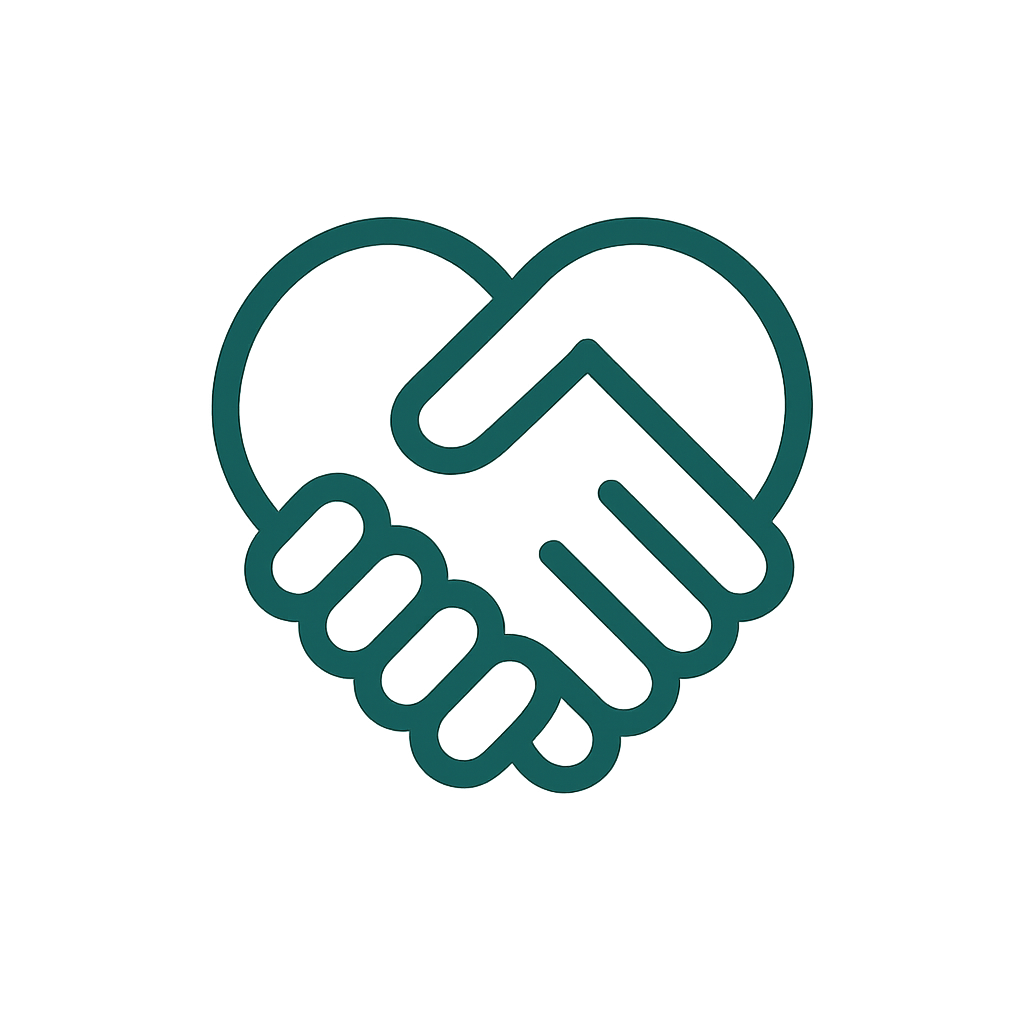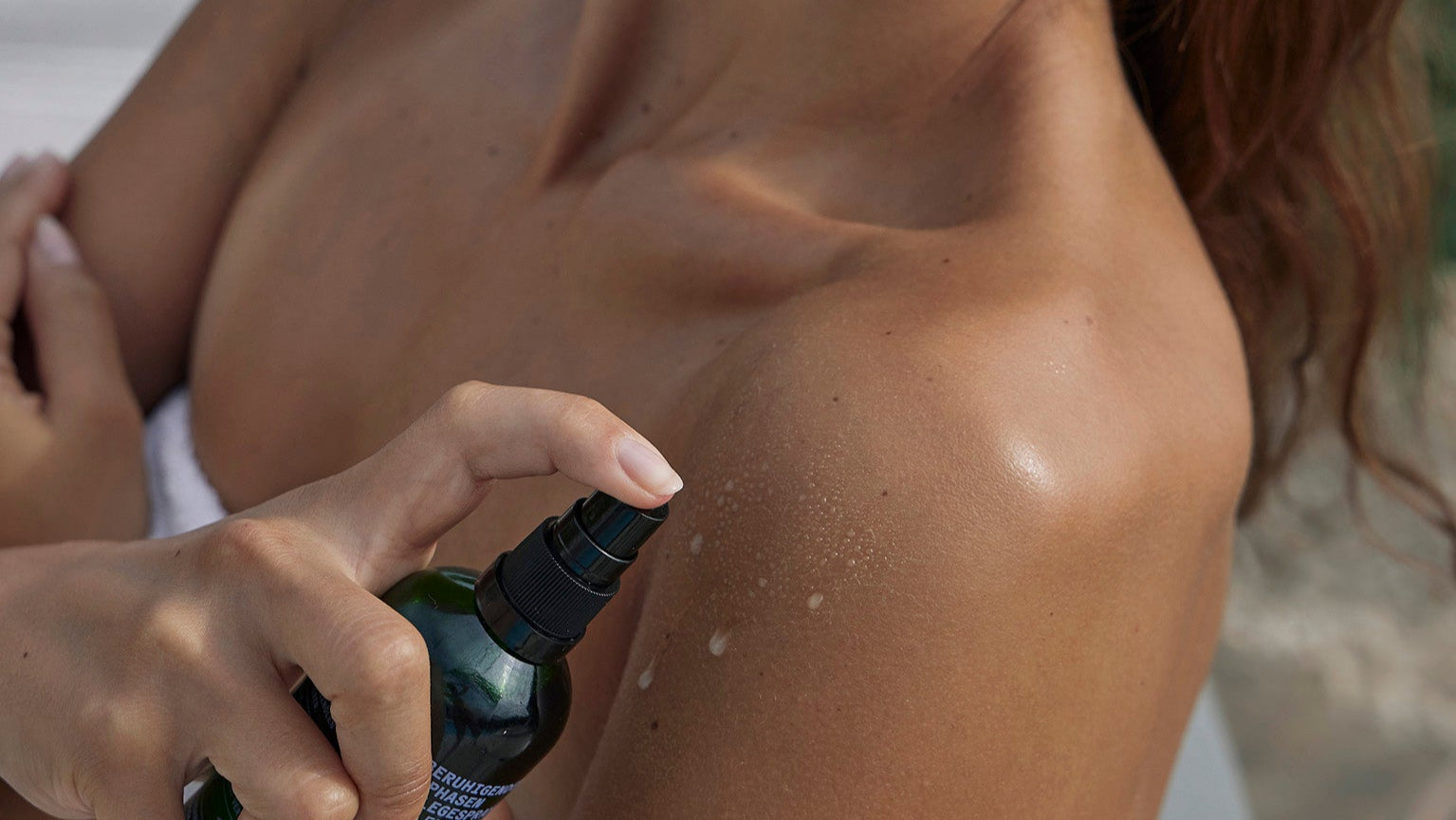Photo: Caro Strasnik Photography
Last Whitsun weekend was ideal for outdoor excursions: The sun was shining, and one could enjoy the lush greenery of nature. The KAMI team was also out and about, recharging their batteries. Unfortunately, in the mild spring air, it's easy to forget that the skin isn't yet used to the sun. On a bike or with a bit of wind, one couldn't feel the sun's power, and then in the evening at the hotel, one could count the sunburn victims. Once almost a trophy, today, thankfully, a serious problem. Sunburn is an acute inflammatory reaction of the skin caused by excessive UV radiation.
Today, Dr. Kerstin Schallaböck, general practitioner and KAMI skincare founder, would like to provide you with comprehensive information about the medical aspects of sunburn as well as helpful tips for prevention and treatment.
Causes and risks
Sunburn occurs when the skin is exposed to excessive ultraviolet (UV) radiation. The amount of radiation the skin can tolerate depends not only on skin type but also on whether the skin has already developed melatonin and light calluses. The UV rays penetrate the skin and cause cell damage, leading to redness, pain, and sometimes even blistering. Long-term damage from repeated sunburns has been shown to increase the risk of skin cancer.
Symptoms
Sunburn is very painful; even the mildest form makes it difficult to sleep, clothing is uncomfortable, and it itches. Doctors distinguish between several levels of severity depending on the symptoms:
- Minor burns: Redness, mild pain and tenderness.
- Moderate burning: Increased redness, swelling, pain, and sometimes blistering.
- Severe burn: Severe redness, blistering, swelling, severe pain, and possibly fever, chills, and headache.
Prevention and treatment:
Prevention: Even though applying sun protection factor (SPF) in face cream is already a habit for many, some areas of the body are often forgotten at the beginning of summer: the neck when cycling, the décolleté, thinning scalps, and the arms that are exposed for the first time. Children are especially sensitive; their skin is thinner, and melatonin production slows down. Despite all the whining about the annoying application: Please persevere; applying sunscreen is a must! Here are a few things I, as a doctor and a mother, would like to recommend to you:
- Sunscreen: Choose a broad-spectrum UVA/UVB sunscreen with at least SPF 30, preferably 50 if your children are still pale. Apply it generously 30 minutes before going outside and ideally reapply every two hours or after swimming and perspiring.
- Protective clothing: It's best to wear long-sleeved clothing, hats, and sunglasses in the sun. I don't know about you, but I can't always convince my kids to do that. A cool cap and sunglasses are fine, but long sleeves? For my last vacation, I discovered some great, stylish beach shirts with extra UV protection, and they even wore them voluntarily!
- Looking for shade: Please avoid the sun, especially between 10 a.m. and 4 p.m., as UV radiation is at its strongest then. Children generally don't like direct sunlight anyway, unless they're playing. It's best to find a good alternative indoor activity during this time. Board games, audiobooks, or a nap are all good options.
- Note the UV index: If you're on vacation, check the UV index for your region to avoid any unpleasant surprises. Remember that the sun isn't just stronger at the seaside, but also at lakes and on mountains due to reflections at altitude!
- Slow: At the beginning of summer or during a vacation, your skin should slowly acclimate to the sun to build up a sun callus. By the end of summer, your skin can tolerate more. A sudden vacation to very sunny climes is therefore the most difficult for your skin to process.
Treatment
If sunburn occurs despite all precautions, the following steps can help relieve the symptoms:
- Cool: Take a cool (not ice-cold) shower or bath to cool your skin. Cool, damp towels can also help.
- Moisture: Applying a moisturizing lotion or aloe vera-based gel helps soothe and hydrate the skin. Avoid products containing alcohol. Be careful, it's unfortunately found in some after-sun products, as these can further dry the skin.
- Hydration: Drink plenty of water to compensate for fluid loss from the burn.
- Painkillers: Over-the-counter pain relievers such as ibuprofen or acetaminophen can help relieve severe pain and inflammation.
- Avoid further sun exposure: Stay in the shade as much as possible and wear light, loose clothing to protect affected skin.
How can KAMI support you?
KAMI skincare was developed for inflamed skin, and sunburn is also an inflammation. All KAMI products therefore help the skin recover. Simply apply the SOS oil directly to damp skin after showering and allow it to absorb. Sensitive skin will absorb the product immediately. Feel free to reapply after 1-2 hours.
I'd especially like to highlight our 2-Phase Spray, which contains 60% organic aloe vera. This moisturizes the skin while soothing it. The KAMI oil it contains also helps relieve itching and tightness.
When to see a doctor?
In some cases it is necessary to consult a doctor:
- When large blisters appear or the blisters become infected.
- If the pain is severe or if the sunburn is accompanied by fever, chills and headache.
- If the sunburn affects a large area of the body
- or when infants and young children are affected.
Sunburn is unpleasant, painful, and unhealthy. But with appropriate precautions, the risk can be significantly reduced. Remember: The best protection is to protect your skin from excessive UV radiation.
Stay healthy and enjoy the sun wisely!
Yours, Kerstin Schallaböck








